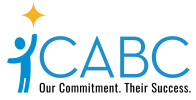Child Development
& Education
Meeting Each Child's Individual Needs
Our program implements the Creative Curriculum which is a comprehensive scientific, research-based curriculum for providing developmentally appropriate practices for young children.
Children participate in indoor and outdoor play and are introduced to the concepts of letters and numbers. They are encouraged to express their feelings and to develop self-confidence and the ability to get along with others through the Second Step curriculum. It also aims to meet the ethnic and cultural needs of the local community.
Our program uses a variety of curriculum enhancements such as:
- Cavity Free Kids
- Everyday Math
- Second Step
- Talking About Touching
- Alphachants
- Active Play
- Color Me Healthy
Our Creative Curriculum
01
Our Philosophy
The philosophy behind our curriculum is that young children learn best by doing. Learning isn’t just repeating what someone else says; it requires active thinking and experimenting to find out how things work and to learn firsthand about the world we live in.
02
Symbolic Thinking
In using real materials such as blocks and trying out their ideas, children learn about sizes, shapes, and colors and they notice relationships between things. In time, they learn to use one object to stand for another. This is the beginning of symbolic thinking. For example, they might pretend a stick is an airplane or a block is a hamburger. These early symbols – the stick and the block – are similar in shape to the objects they represent.
Gradually children become more and more able to use abstract symbols like words to describe their thoughts and feelings. They learn to “read” pictures which are symbols of real people, places and things. This exciting development in symbolic thinking takes place during the pre-school years as children play.
03
The Foundation for Learning
Play provides the foundation for academic or “school” learning. It is the preparation children need before they learn highly abstract symbols such as letters (which are symbols for sounds) and numbers (which are symbols for number concepts). Play enables us to achieve the key goals of our early childhood curriculum. Play is the work of young children.
A Typical Day At Head Start
Every classroom designs a daily schedule to provided consistency and regular routine for young children. The schedule includes a balanced program of child initiated and adult-directed activities, including individual and small group activities, routines, and transitions. Provide alternating periods of quiet and active play. Conduct smooth and unregimented transitions between activities. Children should not always be required to move from one activity to another as a group. Transitions as a vehicle for learning.
- Circle Times (Opening Circle, Language and Literacy, ABC)
- Center Times
- Small Group Activities
- Mealtimes (breakfast, lunch or snack)
- Outside / Physical Development
- Music Time
- Tooth Brushing
- Quiet Time
Staff Qualifications
Our classrooms have 3 teaching staff to a class size of 16-18 children. Each classroom is staffed with a Lead Teacher, Teacher Assistant, and a Paraprofessional.
Lead Teachers are required to have teaching credentials at or above an Associates Degree in Early Childhood Education or a related field. Teacher Assistants are required to have an Associate’s degree or a CDA (Child Development Accreditation). Classroom Support Staff are required to have a High School Diploma or GED. Teaching staff are also required to have 15 hours annually of professional training that links directly to classroom work.
Transition
Our program has established a systematic process for transitioning children from home, another Pre-K or child care into Head Start, from one class or option to another within Head Start, from Head Start into another preschool setting and from Head Start into kindergarten.
It is important to engage parents and children from the beginning of the transition process starting with their first preschool experience to the transition into elementary school.
Individualization
In order to maximize each child’s learning potential, each child will have individual goals based on current developmental abilities and individual zones of proximal development. BCHS system for individualization is linked to processes of child screening and assessment that result in individualized plans for learning.
Battelle Screenings are completed within 45 calendar days of enrollment. The Battelle Screening is an early childhood instrument based on the concepts of developmental milestones. As a child develops, he or she typically attains critical skills and behaviors sequentially from simple to complex. The screening helps measure a child’s progress along a developmental continuum.
School Readiness
Blair County Head Start ensures our school readiness goals support the children’s development of the skills, knowledge and attitudes necessary for success in school and to engage parents as active partners in that process. Physical, cognitive, social, and emotional development are all essential ingredients of school readiness.
- Head Start views school readiness as children possessing the skills, knowledge, and attitudes necessary for success in school and for later learning and life.
- Programs must establish school readiness goals that are appropriate for the ages and development of enrolled children in the following domains: Language and Literacy, Cognition, Approaches to Learning, Physical Health and Motor Development, Social and Emotional Development
- Implementing and measuring progress toward school readiness goals helps programs individualize for each child and ensure that children know and can do what is needed to be ready for kindergarten.
- Head Start respects parents as their children’s primary nurturers, teachers, and advocates, and programs are required to consult with parents in establishing school readiness goals
- As children transition to kindergarten, Head Start programs and schools should work together to promote school readiness and engage families.
